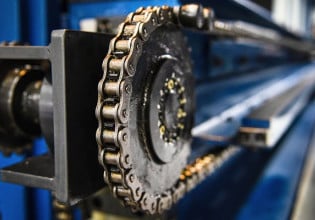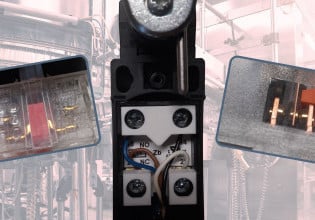An Introduction to Batch Processing
Learn about batch processing in manufacturing, including how it is used, advantages, and disadvantages. Also, see how batch processing can work in real-life situations.
Different process techniques are employed in manufacturing and industrial plants. Batch processing is widely used in large scale manufacturing due to its advantages over other processes in large scale operations. Widely employed in the manufacture of chemicals, pharmaceuticals, and food-based products, it is used when multiple products are produced from the same set of machinery or plant equipment.

Figure 1. Batch processing is often seen in pharmaceutical manufacturing for products that follow similar production steps.
Examples of Large-scale Batch Processing in Action
The term “batch” refers to products of the same type created in a single operation. In the production of wine, the wine produced from a single harvest can be referred to as a batch by the harvest year. In this example, wine is just the product made from the process. Modern production techniques enable the production of different products from the same facilities.
Consider a chocolate manufacturer that produces different brands of chocolate bars. Each brand has a different shape, size, and ingredient list. But the processes and raw materials involved are identical for the most part. Production only needs minor alterations for the different brands.
First, the production for Brand A is done. Production quantity can be determined according to the demand, whether it’s one week or a months’ worth of Brand A sales. After producing a batch of Brand A, the equipment can be cleaned and adjusted to suit the production of Brand B — molds adjusted, wrappers changed, and cutting interval changed. Then a batch of Brand B can be produced. This series can be repeated with any number of chocolate brands manufactured using the same set of equipment with minor alterations.

Figure 2. Operations in a Japanese chocolate factory. Image by Jason Goh.
Another example can be found in the pharmaceutical industry when drugs that experience a seasonal increase in demand need to be produced. Plants that operate with batch processing can be utilized for this increase.
Flu vaccines are in high demand during the cold season and in low demand for the rest of the year. If a standalone plant is built for the manufacture of flu vaccine, it will be underutilized for the most part of the year. If it can be part of a batch processing facility with other vaccines or drugs, it can be produced when demand is high with minimal overhead costs, allowing for maximum capacity utilization.
Batch processing also functions well when the same product has to be shipped with different SKUs (Stock Keeping Units). For example, Coca-Cola with the same flavor is sold in different sizes of cans and bottles. Filling different can/bottle size is done with batch manufacturing processes.
Batch Processing Advantages
- Multiple products can be manufactured using the same equipment in the same facility.
- It eliminates the underutilization of equipment.
- Batch processing plants generally have a higher return on investment and a lower breakeven period.
- Equipment utilized in batch manufacturing processes is cheaper, as it is spread across multiple product lines.
Batch Processing Disadvantages
- Batch processing can be difficult to automate compared to continuous manufacturing. Batch processing has to take into consideration all the variables of products to be manufactured. However, though automation is challenging, most batch processes are semi- or fully automated.
- When the equipment has to be adjusted or altered for the production of the next product, the plant can experience downtime. Most processes require cleaning procedures before the next product can start production. The amount of downtime varies by facility and products.
- Batch processing can take longer than lean manufacturing, depending on the product and process being done.
Using Batch Control Systems
The previous section discussed the advantages and disadvantages of batch processing. In most cases, there would be more disadvantages than advantages due to implementation difficulty and the resulting overhead costs. However, all the disadvantages can be offset if automation is viable.
Batch process control systems help to automate batch manufacturing processes. This helps to increase the rate of production while reducing downtimes and costs. Looking again at the example of filling different Coca-Cola bottles and cans, this process can be easily automated with batch control systems.

Figure 3. Batch control to fill different sized containers. Image courtesy of Precision Digital.
As shown above, the material to be bottled needs to fill two separate containers with different volumes. The liquid is held in the reservoir placed at a height. There are two outlets to the reservoir: one controlled by a high-flow valve, and the other controlled by a restricted flow valve. The flow meter placed right in front of the nozzle measures the flow, that is the volume of liquid passed. The mechanism is connected to a batch control system. The volume of the container can be selected from the controller’s panel.
When the liquid starts flowing, both valves are open. When the target volume is almost reached according to the reading from the flow meter, the high-flow-valve closes. A restricted flow valve has high precision and control to help the transfer of liquid in precise quantities. Both valves are shut when the container is filled. The volume setting can be changed with the push of a button for a container of another size. The batch control system also has light indicators to signal when the reservoir is low.
This is a simple batch process made easy with a batch control system. Batch processes can be automated with batch control systems, but the automation is not a universal design and should be customized for specific instances. Once automated with the control system, batch processes are more versatile, fast, and cost-effective than the continuous manufacturing process.






